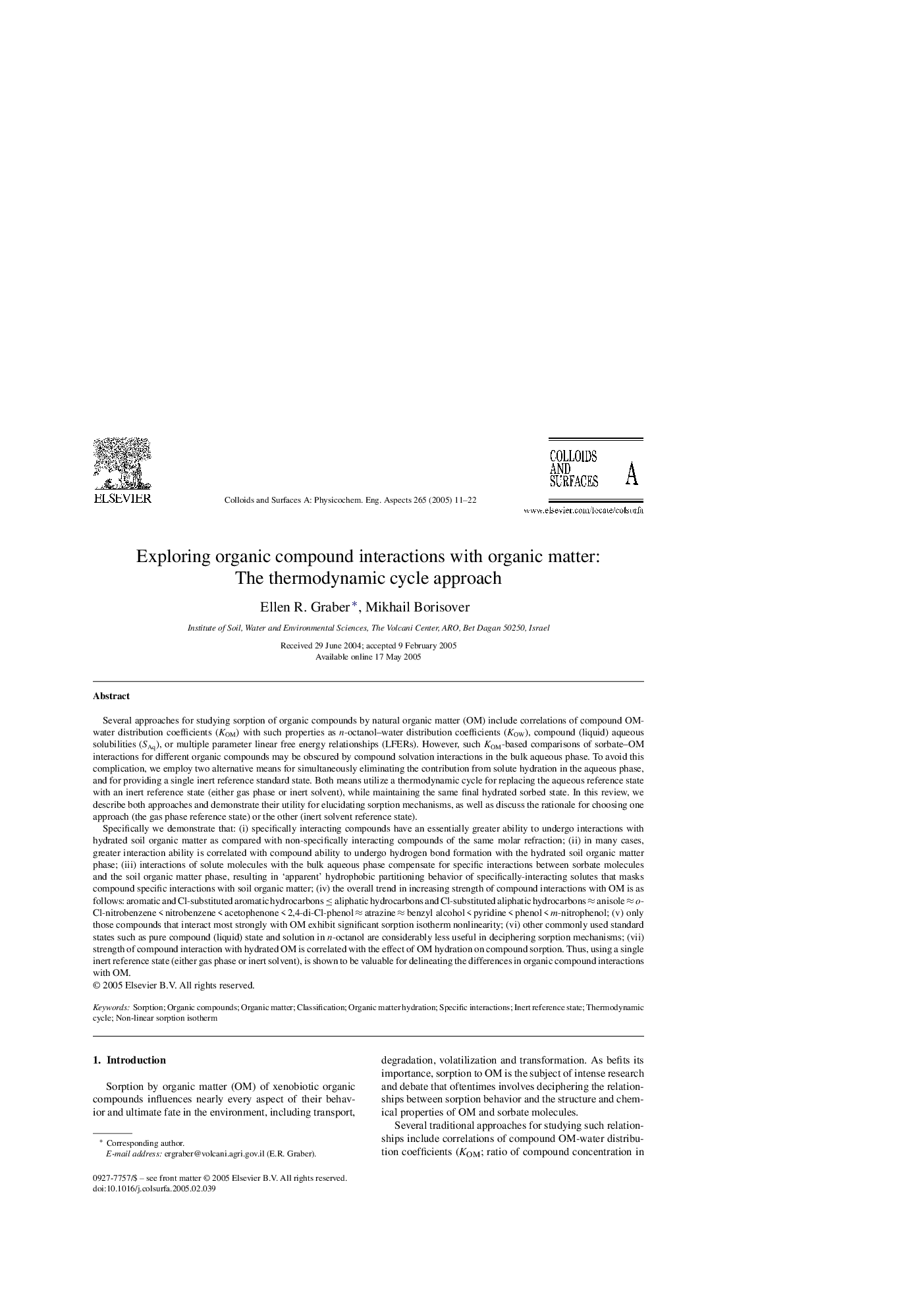| Article ID | Journal | Published Year | Pages | File Type |
|---|---|---|---|---|
| 9675678 | Colloids and Surfaces A: Physicochemical and Engineering Aspects | 2005 | 12 Pages |
Abstract
Specifically we demonstrate that: (i) specifically interacting compounds have an essentially greater ability to undergo interactions with hydrated soil organic matter as compared with non-specifically interacting compounds of the same molar refraction; (ii) in many cases, greater interaction ability is correlated with compound ability to undergo hydrogen bond formation with the hydrated soil organic matter phase; (iii) interactions of solute molecules with the bulk aqueous phase compensate for specific interactions between sorbate molecules and the soil organic matter phase, resulting in 'apparent' hydrophobic partitioning behavior of specifically-interacting solutes that masks compound specific interactions with soil organic matter; (iv) the overall trend in increasing strength of compound interactions with OM is as follows: aromatic and Cl-substituted aromatic hydrocarbons â¤Â aliphatic hydrocarbons and Cl-substituted aliphatic hydrocarbons â anisole â o-Cl-nitrobenzene < nitrobenzene < acetophenone < 2,4-di-Cl-phenol â atrazine â benzyl alcohol < pyridine < phenol < m-nitrophenol; (v) only those compounds that interact most strongly with OM exhibit significant sorption isotherm nonlinearity; (vi) other commonly used standard states such as pure compound (liquid) state and solution in n-octanol are considerably less useful in deciphering sorption mechanisms; (vii) strength of compound interaction with hydrated OM is correlated with the effect of OM hydration on compound sorption. Thus, using a single inert reference state (either gas phase or inert solvent), is shown to be valuable for delineating the differences in organic compound interactions with OM.
Keywords
Related Topics
Physical Sciences and Engineering
Chemical Engineering
Colloid and Surface Chemistry
Authors
Ellen R. Graber, Mikhail Borisover,
